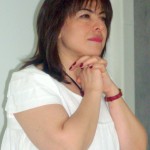I had started to jot down my ideas about this topic in a series of blog posts in April. I have finally found some time to complete the series. For me this last stage is the most important of all.
 Yes, I planned my lesson considering all the crucial aspects that I mentioned in the first stage of this series, and I managed to execute my lesson plan in class. What is next? Has the lesson really ended here?
Yes, I planned my lesson considering all the crucial aspects that I mentioned in the first stage of this series, and I managed to execute my lesson plan in class. What is next? Has the lesson really ended here?
Actually, it is time to sit down and think about it. Even ten minutes would be enough to reflect on it. The wonderful word ‘reflection’ :). What do I reflect on though? Here are a few questions to guide me:
 Were my lesson aims achieved? Were they approriate to the age group and the needs of the learners. Were they too easy or too difficult? Were they too ambitious or not challanging enough for my learners? What about the activities I have chosen to achive my goals? Did the students actually enjoy them and benefit from them? How do I know that? How did I get the feedback? Is the feedback based on something tangible or is it intutive? How do I know that the activities were really suitable? Were all of them absolutely effective? Do I need to make modifications? If I had the chance to do this lesson again what would I change? Would I do it exactly the same way? Why? Why not?
Were my lesson aims achieved? Were they approriate to the age group and the needs of the learners. Were they too easy or too difficult? Were they too ambitious or not challanging enough for my learners? What about the activities I have chosen to achive my goals? Did the students actually enjoy them and benefit from them? How do I know that? How did I get the feedback? Is the feedback based on something tangible or is it intutive? How do I know that the activities were really suitable? Were all of them absolutely effective? Do I need to make modifications? If I had the chance to do this lesson again what would I change? Would I do it exactly the same way? Why? Why not?
 How about the timing of the stages? Were they just fine, too long or too short? Were there students who finished earlier than the others? What did I do to occupy them? Did it create a problem? Did they do what I wanted them to do extra or did they refuse to do so and make noise? What would be a better solution? Can I make use of the faster learners in another way? Can they be the observers of the small groups, for example? Can they be my assistants? Should I prepare different worksheets for these students in order to create enough challange for them? Would it be fair or unfair? Would the slower learners feel offended or relieved?
How about the timing of the stages? Were they just fine, too long or too short? Were there students who finished earlier than the others? What did I do to occupy them? Did it create a problem? Did they do what I wanted them to do extra or did they refuse to do so and make noise? What would be a better solution? Can I make use of the faster learners in another way? Can they be the observers of the small groups, for example? Can they be my assistants? Should I prepare different worksheets for these students in order to create enough challange for them? Would it be fair or unfair? Would the slower learners feel offended or relieved?
What about the physical aspects: did I make use of the room and the seats efficiently? Could I have done anything differently to make the lesson more effective? Did this seating allow learners to interact well? Did the grouping work well? Did all the pairs do the assigned tasks properly? Did the students participate well? If not, what could have I done to increase their participation? Should I have included more technology? Would the task have worked better if it had been assigned electronically? Would it have generated more interaction if I had set up a wiki before the lesson?
Were my instructions clear? Were there any ambiguities when the activity started? Did I have enough number of worksheets? How much did I talk? How much did the students talk? How did I correct errors or did I ignore them intentionlly? Was it efficient to do that? How do I feel about this lesson?

Millions of questions? The answers I give to some of them and the actions I take to improve them will hopefully make my next lesson a better one. And probably many more questions will follow that one.
This is an ongoing journey. In a way, it is really hard to say when a lesson starts and ends…
SO LET’S MAKE THE MOST OF IT AND ENJOY THE JOURNEY. 🙂



